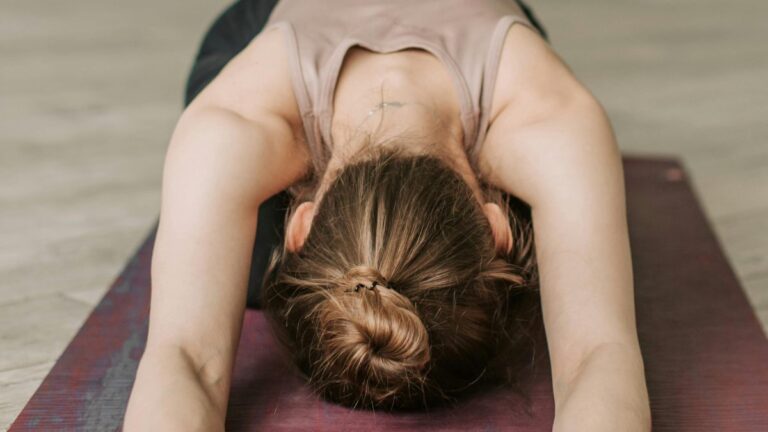How Long To Wait To Shower After An Ice Bath? Be Careful!

Last Updated on October 1, 2025
How Long To Wait To Shower After An Ice Bath?
It’s best to wait 10–20 minutes before showering after an ice bath to let your body naturally rewarm and stabilize circulation.
Jumping into a hot shower immediately can counteract the benefits of cold immersion. Allowing a short pause supports optimal recovery by giving your nervous system and blood flow time to adjust gently, enhancing the anti-inflammatory effects of the ice bath.
How long to wait to shower after an ice bath is one of those small but important recovery questions that leaves people second-guessing.
You finish a cold plunge and wonder if stepping into a hot shower will undo everything you just put your body through. The truth is, timing matters more than most people realize.
Ice baths are more than just a chill endurance test—they’re a powerful wellness and recovery tool. By lowering inflammation, regulating circulation, and calming your nervous system, they set the stage for healing.
But the moments afterward are just as important as the immersion itself. Should you shower right away, or give your body space to reset? In this guide, I’ll help you understand why patience after an ice bath can make all the difference in your recovery ritual.
Why Timing Matters After An Ice Bath
The minutes following an ice bath aren’t just downtime—they’re when your body is actively processing the cold exposure. Understanding this phase helps you see why shower timing is crucial.
- Cooling and circulation reset
During an ice bath, blood vessels constrict to prevent loss of heat (research). Once you step out, they slowly dilate, helping flush waste products and reduce inflammation. Showering too quickly, especially with hot water, interrupts this natural rhythm.
- Nervous system response
Cold immersion stimulates the vagus nerve, calming your body’s stress response. A fast temperature change can jolt the system, leaving you feeling lightheaded or unsettled instead of grounded.
- Muscle recovery window
Athletes often describe the post-ice bath period as the time when soreness eases and muscles reset. Rushing the transition may shorten this recovery window. Read my article on ice bath before or after workout to know how it affects your muscle recovery.
Quick question: Does waiting feel inconvenient? It’s really only 10–20 minutes, and those minutes protect the very reason you took the plunge.
Ideal Waiting Time Before Showering

So, how long should you actually wait? The general guideline is 10–20 minutes—long enough to stabilize, short enough to remain practical. But the right timing can shift depending on your goals and your body’s signals. Research supports this time-dependant recovery practice.
- Shorter wait for lighter recovery
If you took an ice bath after gentle exercise or as part of a self-care routine, a 10-minute pause is usually enough. You’ll feel refreshed without overextending the cold’s effects.
- Longer wait for deeper recovery
After a high-intensity workout, waiting closer to 20 minutes allows inflammation to settle and circulation to normalize before you reintroduce warmth. This can maximize the ice bath’s anti-soreness effect.
- Individual factors
Body composition, cold tolerance, and overall health also influence what feels best. Some people naturally rewarm faster, while others need more time before showering feels safe.
Head-nod moment: Think of waiting as part of the therapy, not a delay—it’s the bridge between stress and recovery.
Read Also: How Long Should You Be In An Ice Bath?
Hot, Warm, Or Cold Shower After Ice Bath?

When it’s finally time to shower, the temperature you choose can shift the outcome of your recovery. Each option, hot, warm, or cold, affects your body in different ways.
- Hot shower after ice bath
Hot water feels soothing, but it can quickly reverse the vasoconstriction created by cold immersion. That sudden dilation may reduce the anti-inflammatory benefit you worked for.
- Warm shower after ice bath
Warm water is a balanced middle ground. It helps you rewarm gently without shocking the system. Many find it comforting while still keeping circulation steady.
- Cold shower after ice bath
Extending the chill with a cold rinse may sound intense, but it prolongs the benefits. It’s especially useful for athletes or anyone focused on muscle recovery (research).
Quick question: Which one should you choose? The answer depends on whether you’re after comfort, extended recovery, or a bit of both.
Read Also: Cold Shower Vs. Ice Bath
Risks Of Showering Too Soon After Ice Bath
Jumping into the shower right after an ice bath might seem harmless, but it comes with risks that are easy to overlook.
- Undoing the benefits
Moving from freezing water straight to hot water forces rapid blood vessel changes. That shift can undo the anti-inflammatory effects and shorten the recovery window.
- Increased dizziness
Cold immersion already lowers blood pressure temporarily. Adding a sudden temperature change may leave you lightheaded or faint, especially if you’re dehydrated.
- Thermal shock
Your body is still regulating its core temperature after an ice bath. A quick jump to hot water increases stress on the cardiovascular system and can feel overwhelming.
Head-nod insight: What feels like saving time might actually cost you the recovery benefits you were hoping for. Before diving in, read this article on how cold should an ice bath be.
Tips For A Safe Transition After Ice Bath

The minutes after you step out of an ice bath set the tone for how your body absorbs the benefits. A mindful transition keeps recovery smooth.
- Wrap up warmly
Towel off and cover yourself with a blanket or robe to allow your body to reheat gradually. This prevents shivering from escalating.
- Hydrate first
Cold immersion shifts fluids within the body. Drinking water before showering supports circulation and stabilizes blood pressure.
- Add light movement
Walking or stretching gently helps restore blood flow and makes the eventual shower more comfortable.
“Think of this pause as a chance to seal in the reset before shifting back into warmth.”
Quick check-in: Feeling rushed to shower? Remind yourself that those 10–20 minutes are part of the ritual, not wasted time.
Integrating Showers Into Your Recovery Routine
Showering after an ice bath isn’t just about hygiene—it’s part of your overall recovery ritual. How you weave it into your routine can either support or weaken the benefits you’re working for.
- Pair it with stretching
Many people find gentle stretching like Pilates in the waiting period before showering helps muscles re-lengthen. It feels grounding and complements circulation.
- Contrast therapy approach
If you’re more experienced, alternating between cold and hot water in the shower creates contrast therapy. This can boost circulation and leave you deeply recharged.
- Mindful listening
No guide can replace how your body feels. Some days you may want a warm rinse, other days an extended pause before showering feels better. Both choices can be right.
Reflective hook: Is this about rules, or rhythm? The answer is rhythm—your body sets the pace.
Final Thoughts
Waiting before showering after an ice bath is more than a detail, it’s a quiet act of respect for your recovery process. Giving your body 10–20 minutes to stabilize allows inflammation to settle, circulation to rebalance, and nervous system calm to take hold.
Whether you prefer a gentle warm shower or extend the chill with a cold rinse, the real key is a mindful transition.
Think of those minutes as space where your body integrates the reset you’ve just given it. By honoring that pause, you’re not just showering smarter—you’re deepening your commitment to wellness and recovery.
Sources
- Andrew J. Young, et al. (1996). Physiology of Cold Exposure
https://www.ncbi.nlm.nih.gov/books/NBK232852
- Tara Cain, et al. (2025). Effects of cold-water immersion on health and wellbeing: A systematic review and meta-analysis
https://journals.plos.org/plosone/article?id=10.1371/journal.pone.0317615
- Jonathan M. Peake, et al. (2016). The effects of cold water immersion and active recovery on inflammation and cell stress responses in human skeletal muscle after resistance exercise






